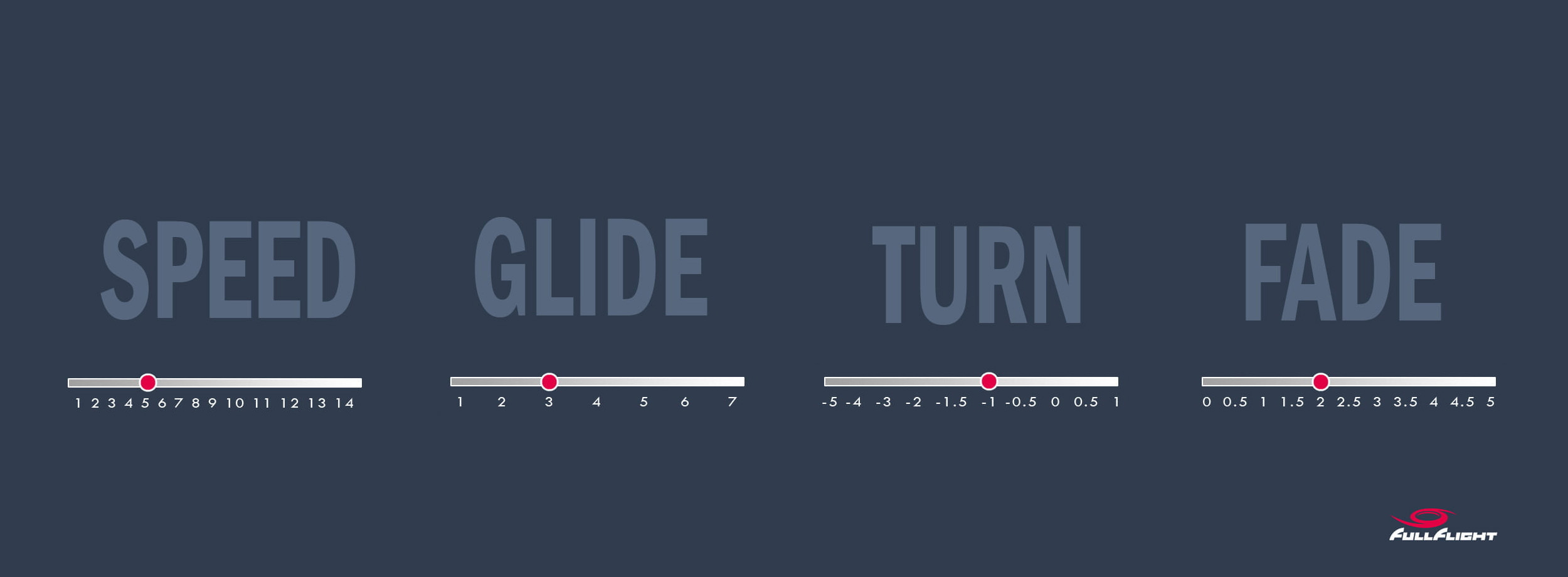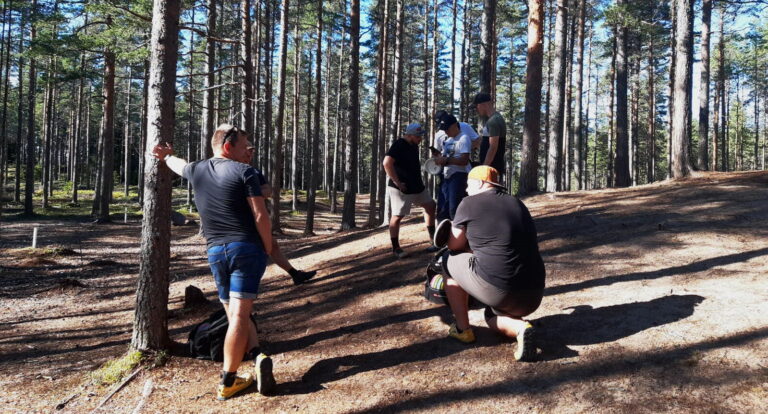Disc Golf Flight Numbers for Beginners
Understanding the flight path and characteristics of disc golf discs can be beneficial for both beginners and more experienced players. The flight characteristics numbers marked on the discs tell about the disc’s speed, glide properties, and its behavior at the beginning and end of the flight path. The purpose of this post is to clarify the meaning of these numbers and help the reader choose the right disc for their needs.
WHAT DO THE FLIGHT NUMBERS MEAN?
Disc golf discs usually display four different flight characteristics numbers: speed, glide, turn, and fade. These numbers describe the properties of the disc and its flight path. The speed number indicates how fast the disc moves and how forcefully it needs to be thrown. The glide number tells how long the disc stays in the air after being thrown. The turn number describes the disc’s behavior in the initial phase of its flight path, and the fade number describes the disc’s behavior towards the end of its flight.
SPEED NUMBER
The speed number indicates the speed of the disc. The higher the speed number, the faster the disc needs to be thrown. A higher speed number often also means that the disc requires more throwing power and technique. Beginners generally suit smaller speed numbers, while more experienced players can use higher speed numbers.
GLIDE NUMBER
The glide number indicates how long the disc stays in the air after being thrown. A higher glide number means that the disc flies longer in the air and requires less throwing power. This makes discs with a high glide number good for beginners who may not be able to generate enough throwing power. More experienced players generally suit smaller glide numbers.
TURN NUMBER
The turn number tells about the disc’s behavior in the early phase of the flight path. A negative turn number means that the disc turns to the right for right-handed throwers at the start of the throw, while a positive turn number means that the disc turns to the left. Beginners often suit small or slightly negative turn numbers, while more experienced players can handle larger turn numbers.
FADE NUMBER
The fade number tells about the disc’s behavior at the end of the flight path. The fade number indicates how strongly the disc turns to the left (for right-handed throwers) at the end of the flight path. A negative fade number means that the disc turns to the right at the end of the flight.
SUITABLE FLIGHT NUMBERS FOR BEGINNERS
Beginners should generally choose smaller speed numbers, so the disc does not require too much throwing power and stays in the air longer. Beginners can also benefit from a negative or small turn number, which helps the disc turn to the right (for right-handed throwers). Regarding the fade number, beginners can choose a disc with either a small or negative fade number, as this means the disc will not turn strongly to the left at the end.
SUITABLE FLIGHT NUMBERS FOR EXPERIENCED PLAYERS
Experienced players generally suit higher speed numbers, as they can generate the necessary throwing power and handle the disc’s longer time in the air. Experienced players can also benefit from a higher turn number, allowing the disc to turn to the right (for right-handed throwers) at the beginning of the throw. Regarding the fade number, experienced players can choose a disc with a high or positive fade number, meaning the disc turns strongly to the left at the end of the flight path. Experienced players can control this behavior and use it to their advantage in tactical situations.
SUMMARY OF FLIGHT NUMBERS
The flight numbers marked on disc golf discs tell about the disc’s speed, glide properties, and its behavior at the beginning and end of the flight path. As the speed number increases, the disc requires more throwing power, while a higher glide number means a longer glide time. A negative turn number means that the disc turns to the left at the beginning of the throw, while a positive turn number means turning to the right. The fade number describes the disc’s behavior at the end of the flight; a negative fade number means that the disc turns to the right at the end of the flight. Choosing the right numbers helps the player select a disc that fits their playing style and skill level.
- Start Playing Disc Golf - May 2, 2024
- 5 Great Discs for Beginners: Start Your Disc Golf Journey - May 2, 2024
- Combine Disc Golf and a Garden Vacation in Europe - May 1, 2024




